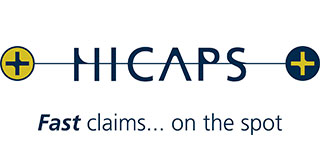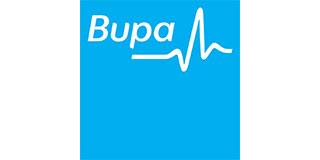Dysautonomia
Dysautonomia encompasses a range of disorders characterised by abnormal function of the autonomic nervous system, leading to symptoms such as dizziness, fainting, unstable blood pressure, and digestive issues.
Osteopathic manipulative treatment (OMT) offers a mechanical approach to managing these symptoms by aiming to restore balance within the body’s systems. This is undertaken using the subtle osteopathic techniques to work on the musculoskeletal regions of the body the correlate with the parts of the spinal where the ANS system originates from. By treating somatic dysfunction (restrictions/ tension) in these target regions, autonomic dysregulation may be assisted.

Understanding Dysautonomia
The autonomic nervous system (ANS) regulates involuntary bodily functions, including heart rate, blood pressure, digestion, and temperature control.
In dysautonomia, these functions become dysregulated, causing a variety of symptoms that can significantly impact daily life.
Osteopathic Approach to Dysautonomia
 Osteopathy focuses on the interrelationship between the body’s structure and function. Through OMT, osteopaths use hands-on techniques to address somatic dysfunctions—areas where muscles, joints, or nerves are not functioning optimally. By correcting these dysfunctions, OMT aims to improve neural communication, potentially alleviating symptoms associated with dysautonomia.
Osteopathy focuses on the interrelationship between the body’s structure and function. Through OMT, osteopaths use hands-on techniques to address somatic dysfunctions—areas where muscles, joints, or nerves are not functioning optimally. By correcting these dysfunctions, OMT aims to improve neural communication, potentially alleviating symptoms associated with dysautonomia.
Evidence Supporting OMT for Dysautonomia
Research indicates that OMT can influence the ANS, which is crucial in managing dysautonomia. A study published in The Journal of the American Osteopathic Association reported a case where a patient with postural orthostatic tachycardia syndrome (POTS), a form of dysautonomia, experienced significant symptom improvement after OMT sessions. The treatment focused on areas affecting autonomic regulation, suggesting that OMT may help restore autonomic balance.2.
Another study explored the effects of OMT on heart rate variability (HRV), a measure of autonomic function. The findings demonstrated that certain osteopathic techniques could enhance parasympathetic activity, calming the nervous system. This modulation of autonomic activity is particularly beneficial for individuals with dysautonomia, where autonomic imbalance is a core issue. 3.
Personalised Osteopathic Care
 At our clinic, we recognise that each patient’s experience with dysautonomia is unique. Our osteopaths conduct thorough assessments to identify specific somatic dysfunctions contributing to autonomic imbalance. We refer to and collaborate with specialized GPS who work in this field to rule out other concerns and assist in the overall management. We can also provide lifestyle guidelines and other resources to assist in your understanding as well as your own management of this complex condition.
At our clinic, we recognise that each patient’s experience with dysautonomia is unique. Our osteopaths conduct thorough assessments to identify specific somatic dysfunctions contributing to autonomic imbalance. We refer to and collaborate with specialized GPS who work in this field to rule out other concerns and assist in the overall management. We can also provide lifestyle guidelines and other resources to assist in your understanding as well as your own management of this complex condition.
Book a Gold Coast Osteopathy Consultation Today
Conclusion

While more extensive research is needed, current evidence suggests that osteopathic manipulative treatment may be of assistance in managing dysautonomia alongside medical and other allied health management as well as lifestyle modifications.
1.Stępnik, J., Czaprowski, D., & Kędra, A. (2024). Effect of manual osteopathic techniques on the autonomic nervous system, respiratory system function, and head-cervical-shoulder complex—a systematic review. Frontiers in Medicine, 11. https://doi.org/10.3389/fmed.2024.1358529
2.Goodkin, M. B., & Bellew, L. J. (2014). Osteopathic manipulative treatment for postural orthostatic tachycardia syndrome. Journal of Osteopathic Medicine, 114(11), 840-845. https://doi.org/10.7556/jaoa.2014.173
3.Henley, C. E., Ivins, D., Mills, M., Wen, F. K., & Benjamin, B. A. (2008). Osteopathic manipulative treatment and its relationship to autonomic nervous system activity as demonstrated by heart rate variability: A repeated measures study. Osteopathic Medicine and Primary Care, 2(7). https://doi.org/10.1186/1750-4732-2-7
4.Rechberger, V., Biberschick, M., & Porthun, J. (2019). Effectiveness of an osteopathic treatment on the autonomic nervous system: A systematic review of the literature. European Journal of Medical Research, 24, Article 36. https://doi.org/10.1186/s40001-019-0393-5
5.Stępnik, J., Kędra, A., & Czaprowski, D. (2025). Impact of osteopathic techniques on autonomic regulation: A study of heart rate variability in healthy adults. Medical Science Monitor, 31, e946903. https://doi.org/10.12659/MSM.946903









